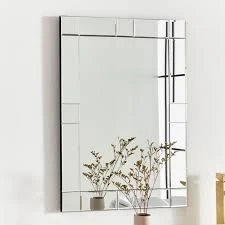

The Rise of Patterned Solar Glass A Sustainable Revolution in Architecture
In recent years, the fight against climate change has accelerated, leading to innovative solutions that aim to reduce our carbon footprint. Among these solutions, patterned solar glass has emerged as a notable advancement, marrying aesthetics with functionality and sustainability. This article delves into the benefits, applications, and future potential of patterned solar glass, reshaping our approach to energy generation.
What is Patterned Solar Glass?
Patterned solar glass is a type of glass that has been specially designed to harness solar energy. Unlike traditional solar panels that often disrupt the aesthetic of buildings, patterned solar glass integrates photovoltaic technology directly within the glass itself. This innovation allows it to capture sunlight while also serving practical architectural functions, such as providing transparency and light transmission. The patterns on the glass can vary widely, from intricate designs to simplistic motifs, making it suitable for a vast array of applications in modern architecture.
Benefits of Patterned Solar Glass
1. Aesthetic Appeal One of the most significant advantages of patterned solar glass is its visual appeal. Architects and designers can incorporate unique designs into facades, windows, or roofs without compromising energy efficiency. This potential makes it a fascinating alternative for urban environments where maintaining an aesthetically pleasing skyline is crucial.
2. Space Efficiency Traditional solar panels require considerable space to generate significant amounts of energy, often leading to inefficient land use. Patterned solar glass can be integrated into the building's structure itself, optimizing energy generation without requiring additional land or roofs. This feature is particularly valuable in densely populated urban areas where space is at a premium.
3. Energy Generation and Insulation Beyond its beauty, patterned solar glass is capable of generating clean energy. Modern photovoltaic technologies allow it to convert sunlight into electricity efficiently. Additionally, the glass can provide insulation, helping to regulate a building’s interior temperature, thereby reducing heating and cooling costs.
4. Durability and Adaptability Made from high-quality materials, patterned solar glass is typically durable and resistant to environmental stressors. Its adaptability allows it to be used in various climates and applications, from residential buildings to commercial skyscrapers and even public installations.

Applications in Modern Architecture
As the world seeks to adopt more sustainable practices, the applications of patterned solar glass in architecture are vast. For instance, it can be utilized in
- Commercial Buildings Transforming office buildings into energy producers while enhancing their visual appeal. - Residential Homes Facilitating energy-efficient homes that do not sacrifice aesthetics for functionality. - Public Spaces Designing parks, pavilions, and other communal buildings that promote sustainability while being visually engaging.
Some pioneering projects around the world have already showcased the effectiveness of patterned solar glass. For instance, major cities are beginning to incorporate it into new developments, signaling a shift in how urban spaces interact with energy generation.
Challenges and Future Potential
Despite its numerous benefits, patterned solar glass faces certain challenges. The initial cost of installation may deter some builders, albeit the long-term savings on energy bills and potential government incentives for renewable energy solutions can offset this investment. Additionally, ongoing research and development will be crucial to making patterned solar glass even more efficient, ensuring its competitiveness with traditional solar technologies.
Looking ahead, the potential for patterned solar glass is immense. As building codes and regulations continue to evolve, integrating solar energy solutions into architectural design is likely to become a necessity rather than a choice. Continued advancements in materials science and technology will enhance the efficiency and functionality of patterned solar glass, paving the way for it to become a staple in sustainable building practices.
Conclusion
Patterned solar glass represents a critical intersection of design and sustainability, offering a promising path forward for modern architecture. As we continue to seek innovative solutions to combat climate change, embracing technologies like patterned solar glass will not only enhance the visual quality of our built environments but also contribute significantly to energy efficiency and sustainability. By marrying form and function, patterned solar glass is set to transform our cities and the future of energy generation in the years to come.